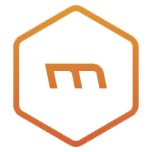One thing is for sure: Python is all the rage these days. As of 2019, it was named the fastest-growing programming language and took fourth place in Stack Overflow’s ranking of the most popular technologies. It does exceptionally well in terms of the number of not only courses but also engineers and third-party vendors using it world-wide: for example, in January 2020, it secured the third place in the TIOBE Index.

What’s more, Python is used by both startups and world-class software companies such as Google, Instagram, Netflix, and Spotify. This alone should make you consider choosing it as the core of your product’s backend. But even if you do, the next step is equally challenging. That’s deciding on the right Python framework.

Framework? Who needs that, anyway?
Before we explore the available solutions, let’s start from the very beginning. A web framework is by no means necessary when you’re building your application. However, using it significantly streamlines the software development process, thus trimming unnecessary spendings and shortening the time-to-market of your product.
How do web frameworks achieve this goal? To put it briefly, they just make developers’ lives easier. As they come with a number of features and components, frameworks don’t require engineers to reinvent the wheel and allow them to focus on some more complex tasks instead.
And what about Python frameworks?
If you dive into the IT world, you’ll see that there is an abundance of frameworks compatible with any programming language available out there – and Python is no exception. They give engineers the ability to implement some basic functions which are shared by the vast majority of web applications. Thus, at the end of the day, the amount of work that the Python devs need to do on their own depends on the framework they choose.
Now that you know why it’s worth taking web frameworks seriously, let’s move on to real-life possibilities, shall we? Depending on your business idea, you’ll benefit from one (or more) of dozens of Python frameworks, e.g. Pyramid, TurboGears, Bottle, CherryPy, Django or Flask.

It’s not our aim to create a full list (which you can find here) of frameworks so today, we’ll focus on two most popular ones used by top Python devs: Django and Flask.
Flask vs Django: which one should I choose?
As is always the case with choosing the tech stack for your project, the answer depends on your needs. Are you up to building a complex web app straight away or is an MVP good enough for you at the beginning? Are you facing any time or budget constraints? Does your prospective tech partner have more experience in either of the two?
While we won’t resolve the Django vs Flask dispute for you, in a moment we’ll show you what makes each of these frameworks stand out from the crowd and how they can benefit different types of ventures.
Django: the good and the bad
Let’s start with the more mature of the two. Initially released in 2005, Django has the following advantages:
- Greater maturity which translates into a more extensive community support and robust documentation.
- Choosing this web framework, you get the full package: an admin panel, object-relational mapping (ORM), database interface, directory structure for apps. This results in no need to use any additional third-party tools or libraries.
- Django-admin makes it easier to handle the administrative part of common projects due to ready-to-use and fully functional admin framework.
- Major time savings with the built-in template engine.
- Thanks to a built-in bootstrapping tool, Django allows Python developers to build web apps without external input and create new applications within the project.
- ORM system enables developers to work with databases (MySQL, SQLite, Oracle and so on) with ease.
- Django prioritizes security and emphasizes preventing issues like SQL injection, cross-site scripting, or clickjacking. What’s more, it’s user authentication system ensures that the user data is safe and sound.
So many benefits must, however, come at a price. In the case of Django, that’s the monolithic structure which may be overwhelming (especially for developers with less experience) and can contain too many features unnecessary to your product’s functioning.
Flask: pros and cons
Saying that Django and Flask are as different as chalk and cheese is not an exaggeration. The list of the advantages of the latter framework is about to show you why we think so:
- Being a microframework that offers the basic features of a web application like URL routing or error handling, Flask is light and flexible. As such, it’s an extensible framework with a customizable structure.
- With Flask being a simple solution, the newbie engineer finds it easier to get used to and the experienced Python developer using it is given greater flexibility when it comes to adding functionalities like authentication or handling forms.
- The above-mentioned benefits mean that Flask is perfect for smaller-scale projects which need to be launched quickly.
Nonetheless, much like Django, Flask is not a perfect solution: its microstructure makes it less powerful than Django and it boasts smaller community support. Once again, however, these drawbacks may turn out to be quite insignificant for certain types of projects.
Django vs Flask: which big names in the digital industry use them?
Let’s see how the advantages of two prominent Python frameworks translate into their popularity on the market. As a comprehensive, reliable, and customizable solution, Django is an essential part of the tech stack utilized by the big fish like Instagram, Spotify, YouTube, and Mozilla. At Merixstudio, we utilize the Python + Django combination as well. If you’re interested in how it turns out, check out our case studies, especially SportsHi and BrandSync.
How does the top Python framework benefit the above-mentioned brands? It makes it easy not only to supplement their apps with new functionalities but also to scale it in accordance with the traffic increase.

Regardless of being less impressive in terms of its capabilities than Django, Flask is held dear by a couple of major brands as well. Airbnb, Netflix, Reddit, Uber – all of these make their backend work with Flask. To find out more about our experience with Flask, we recommend you read one of the most recent case studies showcasing Ginny, a mobile app for dynamic parking management.

Django vs Flask: the verdict
So which web framework is better for your project? Obviously, it all depends on your needs and what you’ll be using Python for in a given project. If simplicity and flexibility are the deal-breakers, then you should definitely choose Flask. It’ll be a great option for a web app filled with static content or a product relying on a number of microservices. If, however, we’re talking about a more complex web application making use of a multitude of functionalities, e.g. an online store, Django is the way to go. So which one do you prefer?
Regardless of whether you choose Django or Flask, we know how to make the best of both frameworks. Check out why it’s worth leaving your web app project in our hands.
Navigate the changing IT landscape
Some highlighted content that we want to draw attention to to link to our other resources. It usually contains a link .
.svg)


.webp)



.svg)








.svg)
